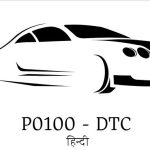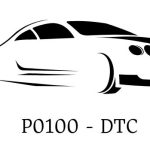International crude oil prices have hit record highs. In the era of soaring oil prices, how can we reduce automobile fuel bills and keep up with our own pockets?
The car fuel-saving methods are closely related to the characteristics of the vehicle and the skills and habits of the driver, in addition to the manufacturer designing the high-efficiency engine and the streamlined body.
The first step in fuel economy is to choose a fuel-efficient car that meets your needs. Choose vehicles with less exhaust, better fuel efficiency, lighter weight, and a more streamlined body. Secondly, the driver’s driving and using the vehicle has a considerable influence on vehicle oil.
The Car fuel-saving methods: Based on the characteristics of the vehicle
- Large-sized vehicles consume less fuel. The vehicle with a displacement of 2000c.c. consumes more fuel than 1300c.c.
- The dark body and interior are more likely to absorb solar heat and consume cold air.
- Auto-distributed cars consume more fuel than hand-displaced cars.
- The use of vehicle air-conditioning will increase fuel consumption.
- Radiation layer tires have better mileage efficiency than conventional twill tires. When the tire pressure is insufficient, it is easy to wear the edge of the tire, and fuel consumption reduces the life of the tire. When the tire pressure is too high, although the gasoline can be saved, the central portion of the tire will wear rapidly.
The Car fuel-saving methods: Based on driving operation
- Develop correct driving habits. When starting the engine for the first time, you must have proper warm-up time and start driving again.
- Usually, the car has the highest driving efficiency at 64 kilometers per hour, so it is more fuel-efficient to drive on the mountain road or curved road. It is difficult to maintain 64 kilometers per hour in the urban area, so it is driving at high speed. On the road, it saves 30% to 50% of gasoline on average. Therefore, the secret of driving fuel in the urban area is to try to keep pace at a fixed speed. Avoid sudden acceleration and emergency braking.
- Minimize unnecessary items such as tools and sports equipment on the vehicle to reduce the weight of the car, increase the mileage and save fuel.
- When driving at high speed, close the window to reduce wind resistance and save gasoline.
- Avoid engine idling. If you encounter a traffic jam, you should turn off the engine when you can’t drive for a short time. On the one hand, you can save fuel and on the other hand, you can keep the air clean.
- In cold weather, the efficiency of the engine will decrease and the fuel consumption will increase.
These all are some car fuel savings methods that you can use anytime and anywhere. If anyone misses out from us then comment below. we will definitely back to you.
You can also read- How to Check Brake Pads | Symptoms of Bad Brake Pads










